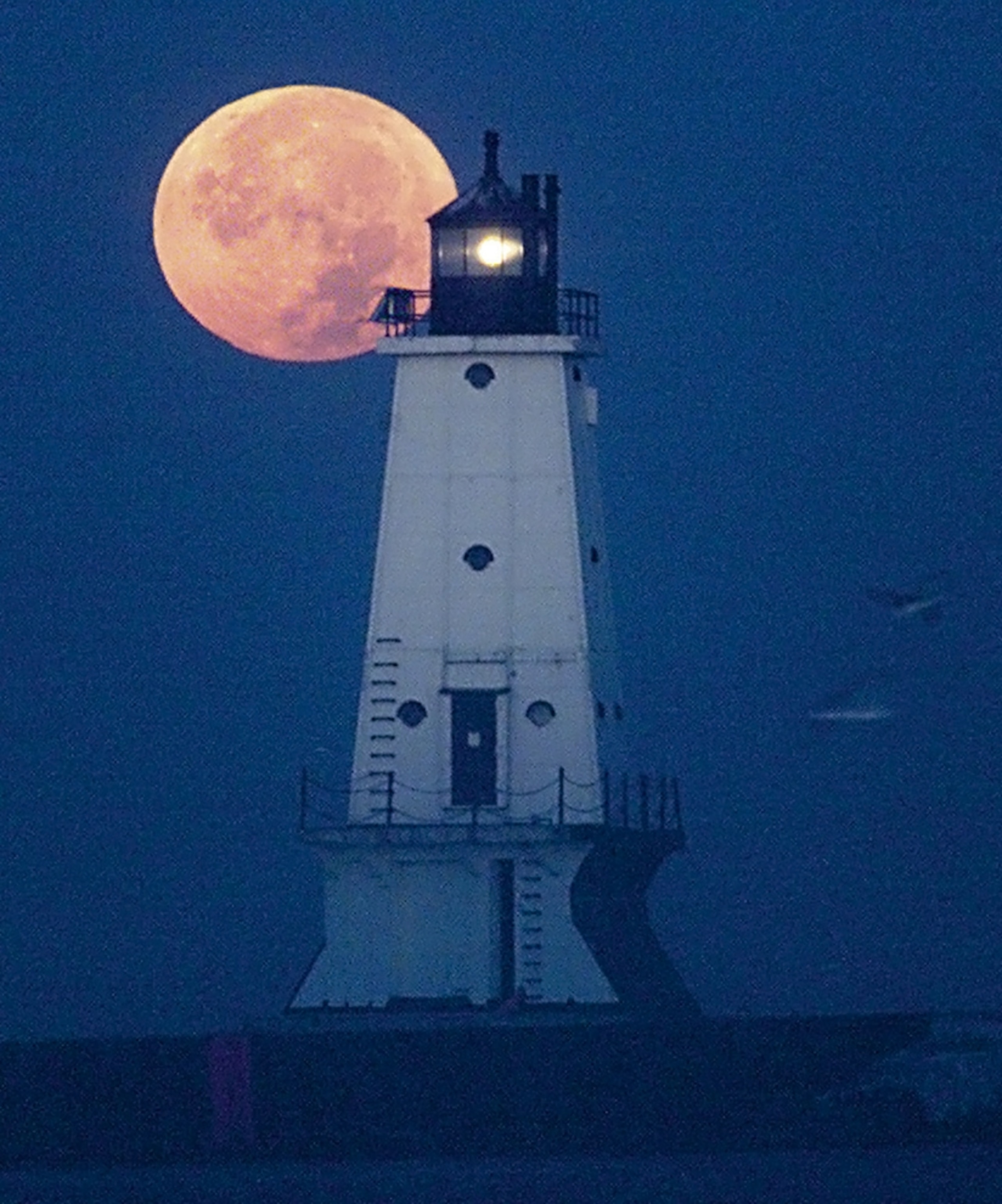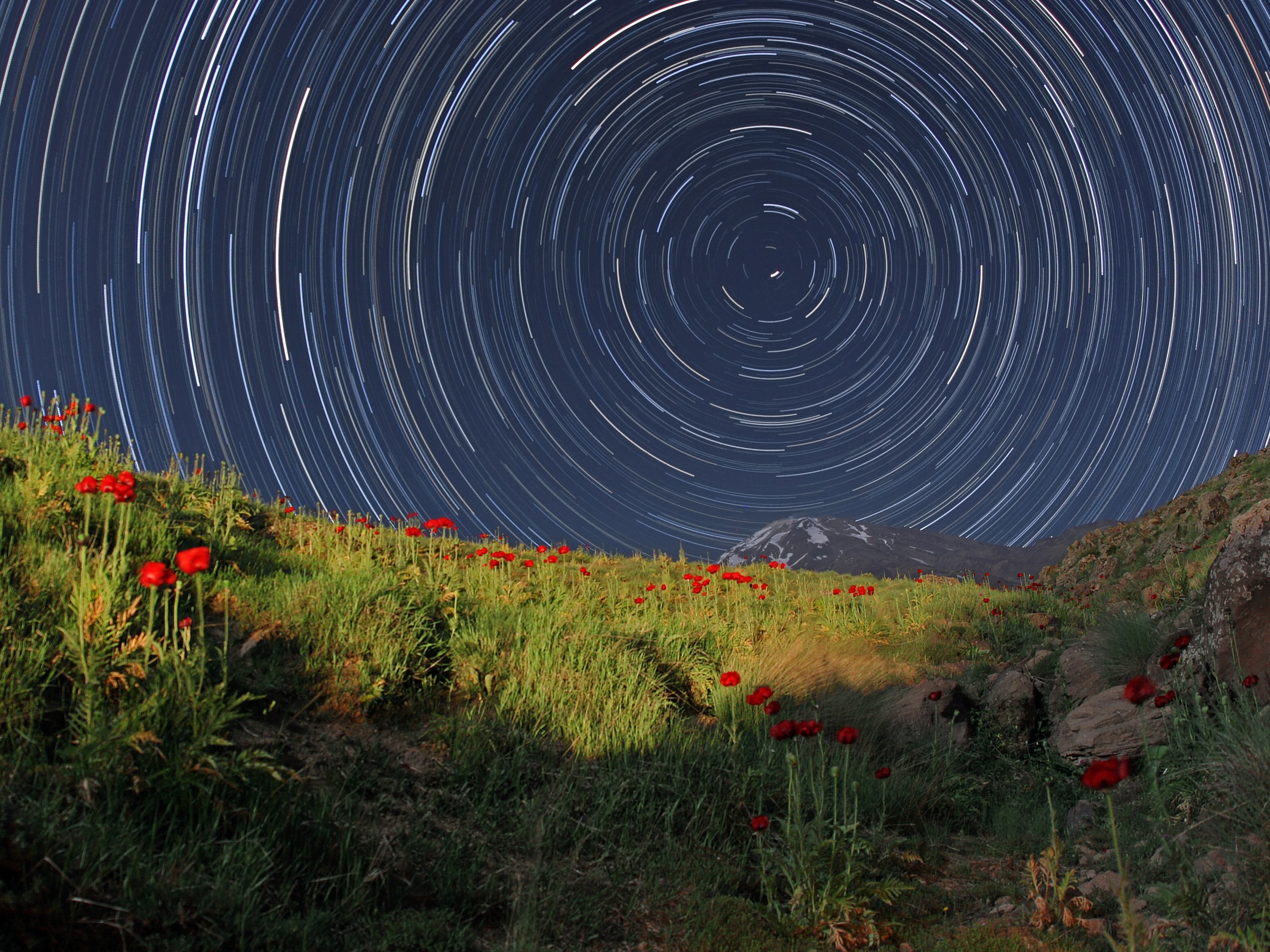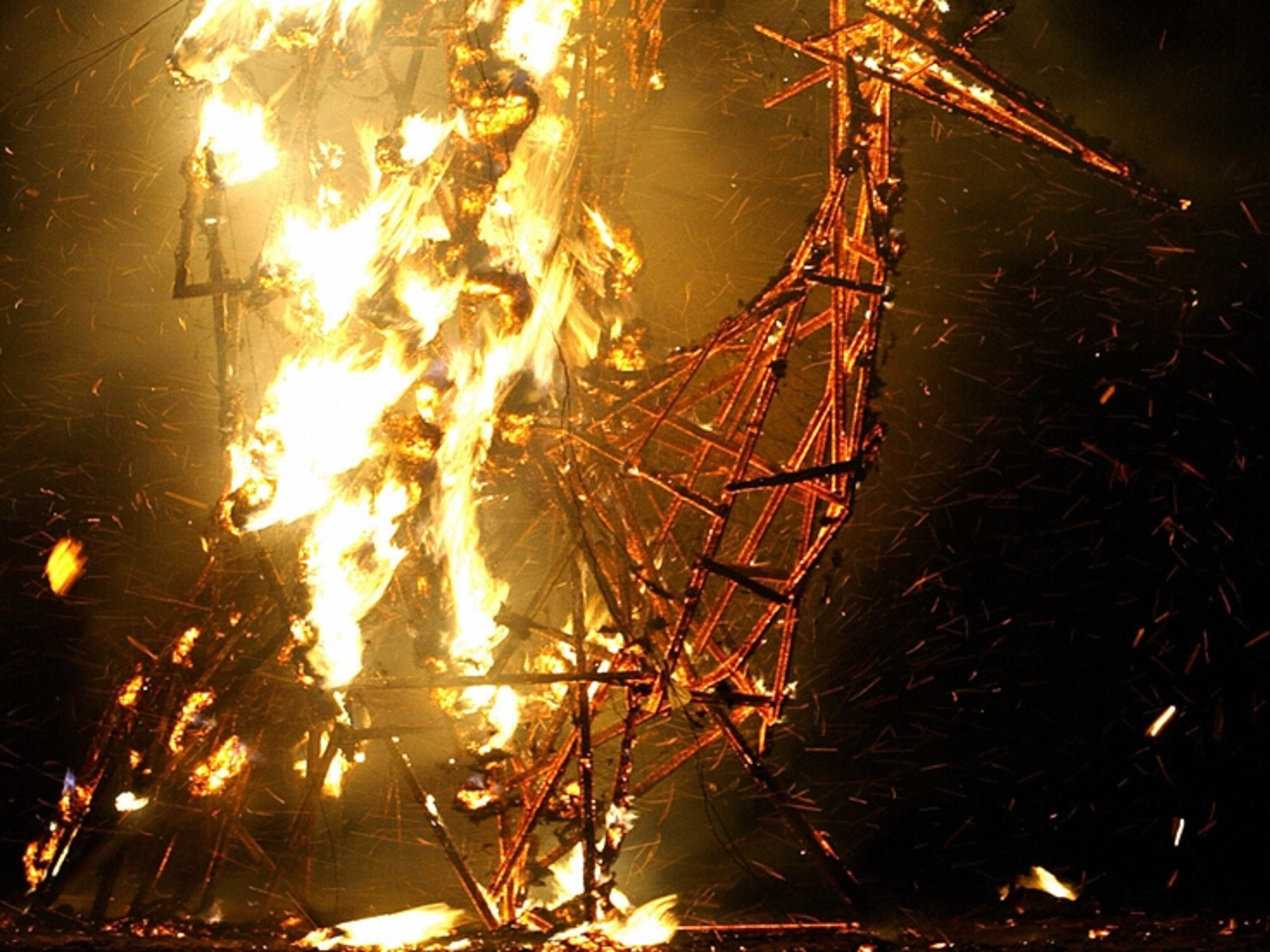
Autumnal Equinox: Why First Day of Fall 2010 Is Different
Full moon to shine on autumnal equinox 2010—first time since 1991.
For the first time since 1991, the full moon will shed light on the beginning of fall—the Northern Hemisphere's autumnal equinox, which in 2010 officially begins Wednesday at 11:13 pm ET.
Video: Equinox Balances Day and Night
"The full moon closest to the September equinox [is] the traditional definition of the harvest moon," said Alan MacRobert, an amateur astronomer and senior editor at Sky & Telescope magazine in Cambridge, Massachusetts.
"And you can't get any closer to the September equinox than this."
The moon is set to rise on the autumnal equinox at 6:27 p.m. ET, though—sticklers, take note—it won't officially be full until 5:17 am ET on September 23, a handful of hours past the start of fall. (Take National Geographic's moon quiz.)
MacRobert said the full moon falling on the autumnal equinox is simply one of many astronomical coincidences that happen to be occurring this month.
The planet Jupiter got the closest it's been to Earth since 1963 on Monday, and Uranus passed right behind Jupiter on the 17th, he noted.
"If you are into conspiracy theories … you may think, Oh my gosh, the heavens are conspiring—something big is going to happen," he said.
"No, it's not."
(See pictures of fall in the United States.)
Autumnal Equinox Illusions
Don't be fooled by the notion that on the autumnal equinox the length of day is exactly equal to the length of night.
The true days of day-night equality always fall after the autumnal equinox and before the vernal, or spring, equinox, according to Geoff Chester, a public affairs specialist with the U.S. Naval Observatory in Washington, D.C.
The difference is a matter of geometry, atmosphere, and language.
Day and night would each be exactly 12 hours long on a spring or fall equinox only if the sun were a single point of light and Earth had no atmosphere.
But the sun, as seen from Earth, is nearly as large as a little fingertip held at arm's length—a size known to astronomers as half a degree wide.
Sunrise is defined as the moment the top edge of the sun appears to peek over the horizon. Sunset is when the very last bit of the sun appears to dip below the horizon.
The vernal and autumnal equinoxes, meanwhile, occur when the center of the sun's disk crosses what's known as the celestial equator, an imaginary line that projects outward from Earth's Equator, Chester noted.
What's more, Earth's atmosphere bends sunlight when it's close to the horizon, making the sun appear to rise a few minutes earlier than it actually does.
"Those factors all combine to make the day of the equinox not the day when we have 12 hours [each] of light and darkness," Chester said.
Autumnal Equinox Special Nonetheless
The length of day and night may not be equal on the equinox, but that doesn't make the first day of fall any less special.
(Related blog: "Saturn Equinox Arrives.")
The spring and autumnal equinoxes, for starters, are the only two times during the year when the sun rises due east and sets due west, according to MacRobert.
The autumnal equinox and vernal—or spring—equinox are also the only days of the year when a person standing on the Equator can see the sun passing directly overhead.
On the Northern Hemisphere's autumnal equinox day, a person at the North Pole would see the sun skimming across the horizon, signaling the start of six months of darkness.
On the same day, a person at the South Pole would also see the sun skim the horizon, beginning six months of uninterrupted daylight.
Autumnal Equinox: Day-Night Split
Most people will never see the full 12 hours of sunup and sundown on the autumnal equinox, noted Judith Young, a professor of astronomy at the University of Massachusetts in Amherst.
That's because most people have hills or trees blocking their views of a flat horizon. Thus, they see the sun rise later and set earlier than it does for a horizon without obstruction, she said.
What's more, for people who don't live on the Equator, the sun still rises and sets at an angle to the horizon, noted Young, who built a Stonehenge-like solar calendar and observatory on the University of Massachusetts campus.
Even though the sun rises due east and sets due west on the autumnal equinox, "you'll only see an east sun rising and west sun setting with an obstruction-free horizon," Young said.
The autumnal equinox and vernal equinox aren't even midway between the solstices, which are the days of greatest and least light of the year, she added.
"That comes about because the Earth's orbit is not a true circle. We have a slightly elliptical orbit," she said.
The elongated orbit means that Earth goes faster around the sun in January, when it is closest to the star, than it does when it is farthest away from the sun in July.
"We arrive at the September equinox a day late, because we were going a little bit slower in July, and we arrive at the March equinox a day earlier," Young said.
Equinox Oddity
Another equinox oddity: A rule of the calendar keeps spring almost always arriving on March 20 or 21—but sometimes on the 19th—Sky & Telescope's MacRobert said. (See related pictures: "Spring Equinox Marked With Fire, Druids, More.")
In 1582 Pope Gregory XIII established the Gregorian calendar, which most of the world now observes, to account for an equinox inconvenience.
If the pope hadn't established the new calendar, every 128 years the spring equinox would have come a full calendar day earlier, eventually putting Easter in chilly midwinter.
"It begins with the fact that there is not an exact number of days in a year," MacRobert said.
Before the pope's intervention, the Romans and much of the European world marked time on the Julian calendar.
Instituted by Julius Caesar, the old calendar counted exactly 365.25 days a year, averaged over a four-year cycle. Every four years a leap day helped keep things on track.
It turns out, however, that there are 365.24219 days in an astronomical "tropical" year—defined as the time it takes the sun, as seen from Earth, to make one complete circuit of the sky.
Using the Julian calendar, the autumnal equinox, vernal equinox, and seasons were arriving 11 minutes earlier each year. By 1500 the spring equinox had fallen back to March 11.
To fix the problem, the pope decreed that most century years (such as 1700, 1800, and 1900) would not be leap years. But century years divisible by 400, like 2000, would be leap years.
Under the Gregorian calendar, the year is 365.2425 days long, "close enough to the true fraction that the seasons don't drift," MacRobert said.
With an average duration of 365.2425 days, Gregorian years are now only 27 seconds longer than the length of the tropical year—an error which will allow the gain of one day over a period of about 3,200 years.
Nowadays, according to the U.S. Naval Observatory's Chester, equinoxes migrate through a period that occurs about six hours later from calendar year to calendar year, due to the leap year cycle.
The system resets every leap year, slipping a little bit backward until a non-leap century year nudges the equinoxes forward in time once again.








